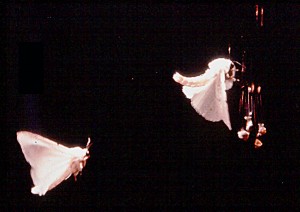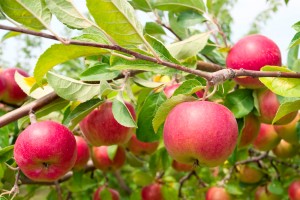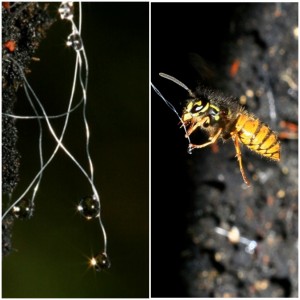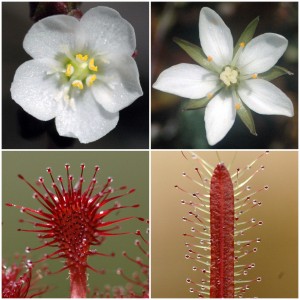
Identification of pheromones and semiochemicals
Chemical communication is the most common type of communication in animals and plants. Animals use chemical signals to interact with each other and with their environment. The nature and the complexity of the chemical signals vary from one species to another. Pheromones and infochemicals have been identified for thousands of animal species. The semiochemicals are being used for monitoring pests, delimitation, detection of invasive species, control of pests, studies of biodiversity and ecology, and can be used for protection of threatened species. Identification of semiochemicals involves extraction, isolation, and structural elucidation using various analytical chemistry techniques. This is followed by synthesis and biological testing. One of the main objectives of my research program is the identification of pheromones and semiochemicals for economically important insect pests and invasive species. Over the past ten years, we have identified pheromones and semiochemicals for many important pests. Some of the compounds have been adapted in pest management program.
Development of semiochemical-based system for pest control
 The public demand for environmentally benign alternatives to broad-spectrum insecticides has never been greater, and control of pests using semiochemicals can help satisfy this desire because the quantity of semiochemicals released into the environment is in relatively minute amounts. In addition, many if not most semiochemicals are relatively nontoxic to vertebrates as well as beneficial insects. In recent years, semiochemical-based pest management programs have been increasingly used to provide environmentally friendly approaches to control major insect pests, including mating disruption, mass trapping, “lure and kill,” and to a lesser extent “lure and infect”. Mating disruption that seeks to disorient or misdirect insects searching for mates has been the most successful direct control tactic, principally targeting moths. Mass trapping and lure and kill are similar technologies that have been used to control a wide range of insect pests, typically species in Lepidoptera, Coleoptera, and Diptera. These technologies have been used for decades in pest management and may be able to contribute to the eradication of new incursions of invasive species. Part of my research program is the development of semiochemical-based systems to control insect pests and in the eradication of invasive species. We target a range of economically important pests and invasive species.
The public demand for environmentally benign alternatives to broad-spectrum insecticides has never been greater, and control of pests using semiochemicals can help satisfy this desire because the quantity of semiochemicals released into the environment is in relatively minute amounts. In addition, many if not most semiochemicals are relatively nontoxic to vertebrates as well as beneficial insects. In recent years, semiochemical-based pest management programs have been increasingly used to provide environmentally friendly approaches to control major insect pests, including mating disruption, mass trapping, “lure and kill,” and to a lesser extent “lure and infect”. Mating disruption that seeks to disorient or misdirect insects searching for mates has been the most successful direct control tactic, principally targeting moths. Mass trapping and lure and kill are similar technologies that have been used to control a wide range of insect pests, typically species in Lepidoptera, Coleoptera, and Diptera. These technologies have been used for decades in pest management and may be able to contribute to the eradication of new incursions of invasive species. Part of my research program is the development of semiochemical-based systems to control insect pests and in the eradication of invasive species. We target a range of economically important pests and invasive species.
Chemical ecology of invasive social wasps

Due to increase in global trade, some Vespula species are becoming a global problem as invasive species when they are accidentally transported with trade goods to new environments. When introduced to new habitats, the wasps can severely alter the ecosystem. Nowhere has the invasion of social wasps been more detrimental than in New Zealand, where two species of vespulid wasps, Vespula germanica (Fabricius) and Vespula vulgaris (Linnaeus), have caused a major disruption of native forest ecosystems. In the beech forests rich in honeydew, V. vulgaris densities can reach up to 30 nests per hectare. Such high densities of voraciously predatory wasps decimate native invertebrate populations. In six years of research work, we have developed several efficient synthetic based lures for trapping social wasps in beech forests which are more potent than the raw bait currently used in wasp management. A novel queen substance has been isolated and identified. Our work has demonstrated the existence of a long range sex pheromone in the two species of social wasps V. vulgaris and V. germanica plus further evidence for cross attraction between the two species suggesting similarities in the sex pheromone structure and the existence of hybrid species. We have investigated the potential of the new synthetic lures in management of social wasps. We are planning to investigate the biological activity of the novel queen compound and characterize its role in regulating the social behaviour of workers in the two species of social wasps.
Carnivorous plants – insects- interaction
Of more than 600 species of carnivorous plants represented in Of more than 600 species of carnivorous plants represented in Ecosystem in almost every region of the world, about 38 % of the species are found in Australia and New Zealand. Carnivorous plants utilize various trapping mechanisms to capture a wide variety of prey that serve as an important nutritional supplement. While these plants depend on insect prey, the plants also need to attract insects that transfer pollen between flowers of individual plants and ensure outcrossing reproduction. Very little is known about the nature and role of chemical and visual signals that may be involved in inter-specific communication between carnivorous plants and their insect prey and pollinators, or how those signals would resolve pollinator-prey conflicts. Since Darwin suggested that carnivorous plants attract prey insects, it has become widely accepted that these plants use various cues to attract prey. However, recent studies only partially address these cues and reach inconsistent conclusions. Our work in this project is to examine both chemical and visual signals as mechanisms employed by carnivorous plants to attract prey and to resolve pollinator-prey conflicts. We hypothesized there may be qualitative and quantitative differences in the volatiles between flowers and traps, perhaps in conjunction with visual and spatial mechanisms, that mediate the responses of pollinators and prey to traps and flowers. We anticipate that this work will elucidate the plant-insect interactions among sensory physiological, behavioural, and evolutionary strategies that optimise fitness for carnivorous plants and their pollinators.
Of more than 600 species of carnivorous plants represented in Ecosystem in almost every region of the world, about 38 % of the species are found in Australia and New Zealand. Carnivorous plants utilize various trapping mechanisms to capture a wide variety of prey that serve as an important nutritional supplement. While these plants depend on insect prey, the plants also need to attract insects that transfer pollen between flowers of individual plants and ensure outcrossing reproduction. Very little is known about the nature and role of chemical and visual signals that may be involved in inter-specific communication between carnivorous plants and their insect prey and pollinators, or how those signals would resolve pollinator-prey conflicts. Since Darwin suggested that carnivorous plants attract prey insects, it has become widely accepted that these plants use various cues to attract prey. However, recent studies only partially address these cues and reach inconsistent conclusions. Our work in this project is to examine both chemical and visual signals as mechanisms employed by carnivorous plants to attract prey and to resolve pollinator-prey conflicts. We hypothesized there may be qualitative and quantitative differences in the volatiles between flowers and traps, perhaps in conjunction with visual and spatial mechanisms, that mediate the responses of pollinators and prey to traps and flowers. We anticipate that this work will elucidate the plant-insect interactions among sensory physiological, behavioural, and evolutionary strategies that optimise fitness for carnivorous plants and their pollinators.
Instrument development for biological and chemical research

The development of novel instrumentation that provides new research capabilities that will significantly improve current technologies in aspects such as accuracy, precision, resolution, throughput, flexibility, portability, breadth of application, costs of construction or operation, or user-friendliness. This involves the development of instruments that can be used to improve current technology in pest management and detection?
A number of projects related to instrument and method development have been undertaken. These include the development of tracking system for recording insect flight in 3D, which was further developed to track multiple organisms. This required the development of suits of software for visualization and analysis of animals movements. Other instruments developed include a piezoelectric sprayer for precise release of semiochemicals, which was later upgraded to work under field conditions.
Recently, a low cost Laser Vibrometer was developed which costs about 10% of that of the Doppler Laser Vibrometer, and the former has more advantages. A software for remote sensing was developed for both Android and iOS systems which improve trapping and observations. A new smart dispenser for detection of insect pests and application of insecticides has been also developed. Powerful Kovats retention index calculator and match search software has been developed that is now available on The Pherobase.


